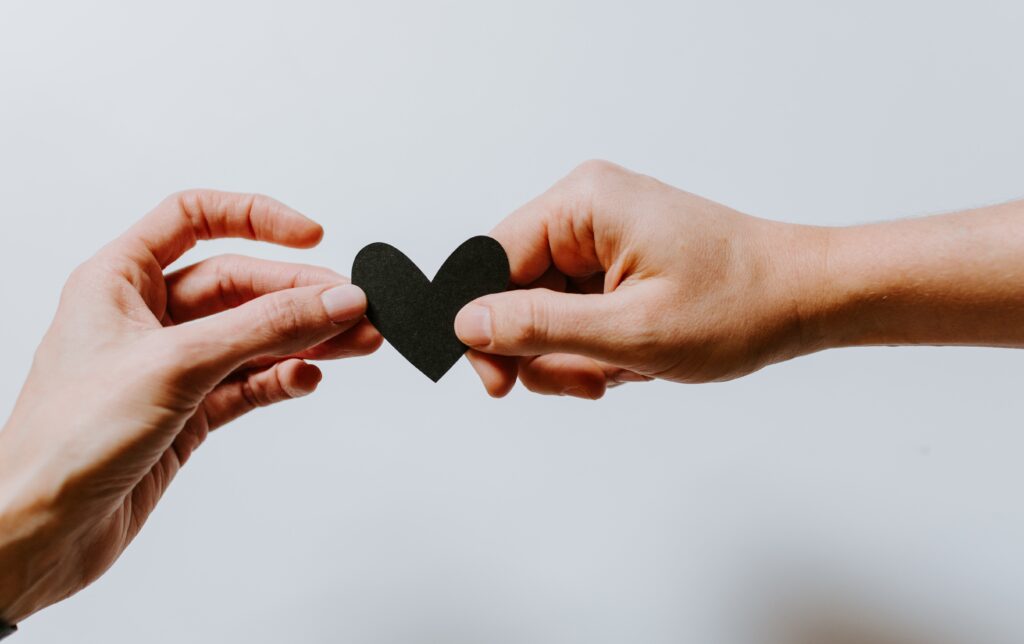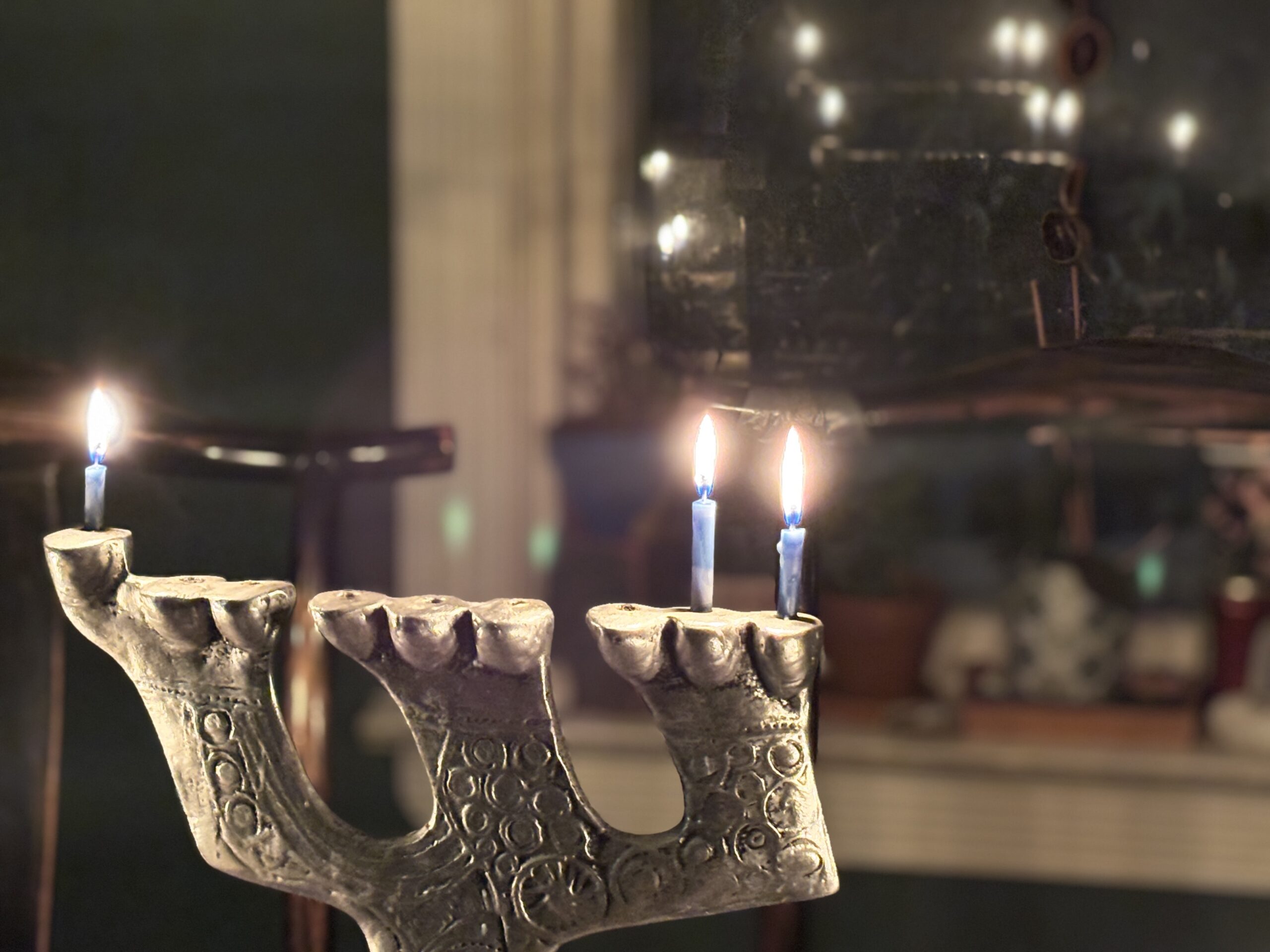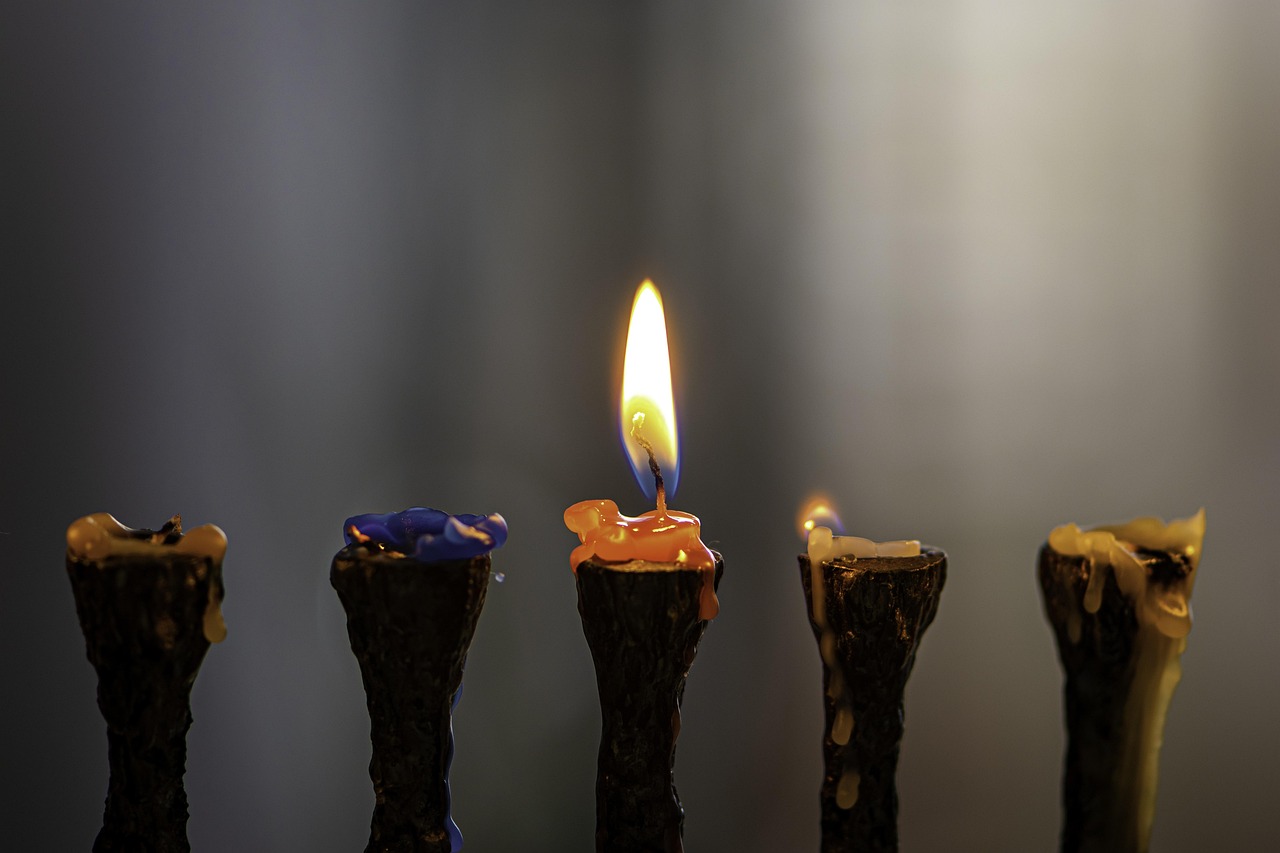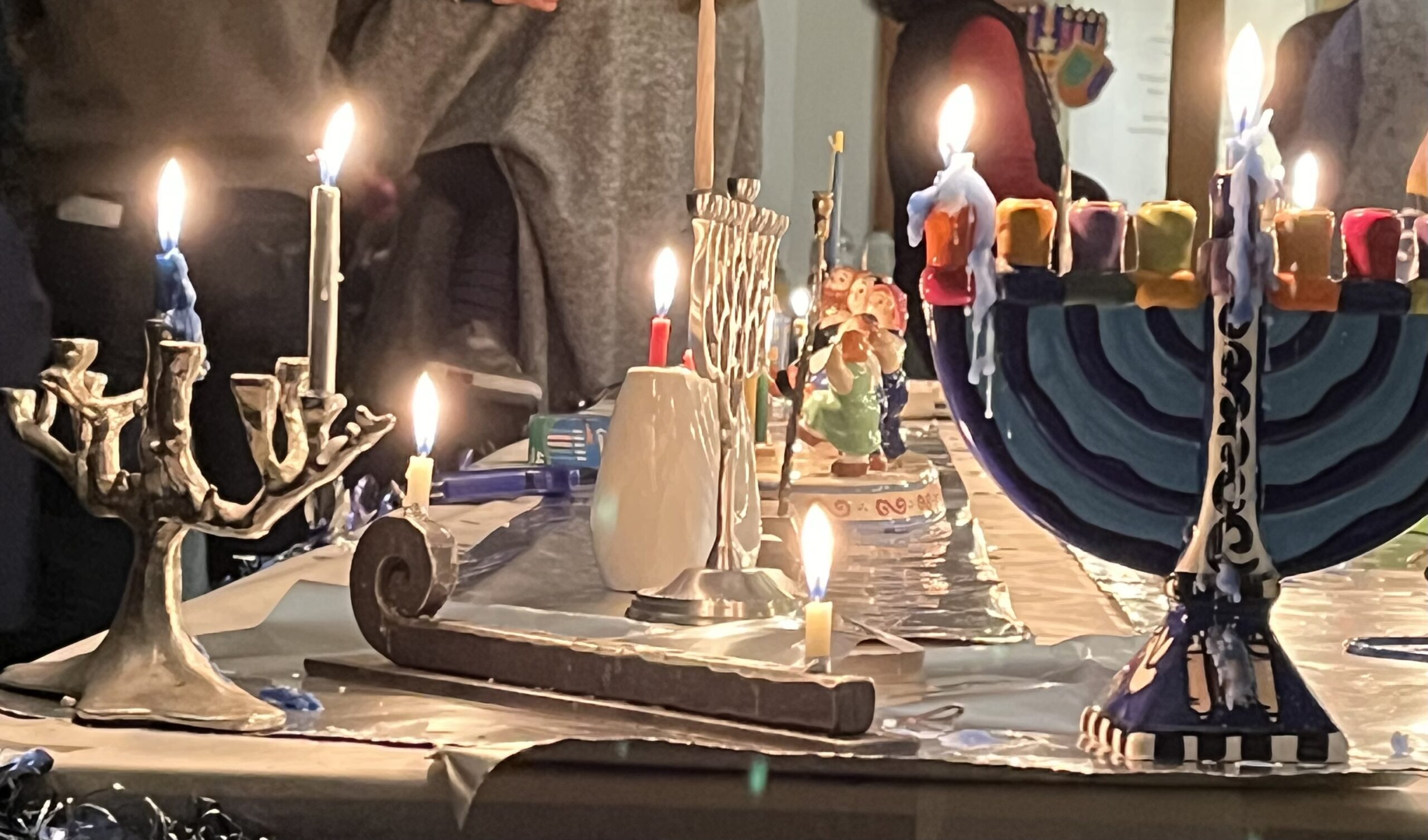1. Introduction
Leader:
Mourning is a solemn, separate time. It is a time like no other: a time during which we confront the pain of separation and loss and a relationship interrupted. It is also a time during which we are forced to confront our reality—that for us, life will continue, and that it—and we—will never be the same.
During the last thirty days, you have been set apart. And as hard as this time has been, it has also been a time that has allowed for contemplation —a time set aside to allow us to express our feelings. But Jewish tradition teaches us that when we have mourned for thirty days, our time of intense mourning comes to an end—we must begin to move from this difficult yet protected space back into our community and into the wider world. We must leave shloshim.
2. Lighting of the Candle and the Washing of Hands
Leader [lights the candle and says]:
We light this candle in memory of _______________, for whom we have been in shloshim. May we be inspired to deeds of lovingkindness in his/her memory.
Leader:
Jewish tradition teaches us that we wash our hands before embarking on a sacred act so that we may recognize the separation of the ordinary from the holy. Rosemary is the herb of remembrance, and we have put it into our water. So we begin our transition from shloshim by recognizing the holiness in which we have been engaged—we have followed the commandment to observe the laws of mourning. This ritual is another kind of sacred time in which we begin this transition from intense mourning to beginning our lives anew.
[One by one, all wash their hands in a bowl of warm water that has been fragranced with rosemary. As each person finishes drying his/her hands, he/she holds the towel for the next person, until all have finished.]
3. The Mourners’ Blessing
Leader:
Let us read together the Mourners’ Blessing: find the text here.
All read:
We who are worn out and crushed by this mourning, let our hearts consider this: this is the path that has existed from the time of creation and will exist forever. Many before us have drunk from the cup of sorrow and many will yet drink. May the One who comforts bring comfort to us. Blessed is the One who comforts mourners.
4. The Tzedakah Box/Basket
Leader:
Tzedakah—justice—is an integral part of our tradition. Tzedakah honors the giver as well as the person in whose name it is given. Therefore, the giving of tzedakah keeps alive the legacy and the memory of ____________. And so we say,
יְהִי רָצוֹן מִלְּפָנֶיךָ אֲדֹנָי אֱלֹהֵינוּ וֵאלֹהֵי אֲבוֹתֵינוּ וְאִמוֹתֵינוּ שֶׁיִּצְרֹר בִּצְרוֹר זִכָּרוֹן עוֹלָמִי בְּשֵׁם צְדָקָה זוֹ
________אֶת שֵׁם וְזִכָּרוֹן שֶׁל
Yehi ratzon milfanekha Adonai Eloheynu v’Elohey Avoteynu v’Imoteynu, sheh-yitzror b’tzror zikaron olami b’shem tzedakah zo et shem v’zikaron shel ____________
Leader:
Together we say:
All read:
May this tzedakah, this act of justice done in memory of ________________, save him/her from the death of forgetfulness, and keep him/her safe in the eternity of memory.
[Leader passes the tzedakah box/basket to all present. Each person places tzedakah into the box or basket.]
5. Times and Seasons
[Leader speaks for a few moments, connecting the Torah passage to the Jewish calendar. The Leader also gives his/her own reflections on the complexities of feelings surrounding death and mourning—that there are 3 kinds of loss: what was, what was not and what can never now be.]
Reading: Excerpt from Ecclesiastes 3
6. Words of Farewell
[The leader instructs each person to take a piece of paper and a pen from the pre-prepared basket and write a blessing, memory or message. The writing may be addressed to the deceased, to the Holy One, or may simply express a thought or feeling of the writer. The leader reminds those present that this is a time to write openly and honestly, as these writings will be confidential and planted with the tree. The leader asks for silence while everyone writes so that each person can hear what his/her heart prompts him/her to write. When everyone has finished, the leader asks that everyone fold his/her piece of paper and hold it for a few moments, thinking about what he/she has written. ]
Leader [Introduce Psalm 121]:
Kabbalah teaches that having a copy of Psalm 121 in the delivery room during labor and at the time of birth stimulates G-d’s mercy on this new life. In this moment, when we emerge from the time of shloshim into this new part of our lives, we pray that the Holy One will help us to make this transition.
Leader reads Psalm 121:
A Song of Ascents. I lift my eyes to the mountains—from where will my help come? My help will come from the Holy One Maker of heaven and earth. The Compassionate One will not let your foot falter; your guardian does not slumber. Indeed, the Guardian of Israel neither slumbers nor sleeps. The Holy One is your guardian, your protective shade at your right hand. The sun will not harm you by day, nor the moon by night. The Holy One will guard you from all evil and will guard your soul. The Compassionate One will guard your going and your coming from now for all time.
7. Planting the Tree of Memory
Leader:
A short time ago, we stood at the side of another opening into the earth. We picked up shovels and shoveled earth, paying honor to the dead. Today, we are here to plant a tree in memory of ____________.
Jewish tradition understands that what is planted today may take a long time to bear fruit. This idea is illustrated by the story of the carob tree from the Babylonian Talmud:
One day, Honi the Circle Maker was walking on the road and saw a man planting a carob tree. Honi asked the man, “How long will it take for this tree to bear fruit?”
The man replied, “Seventy years.”
Honi then asked the man, “And do you think you will live another seventy years and eat the fruit of this tree?”
The man answered, “Perhaps not. However, when I was born into this world, I found many carob trees planted by my father and grandfather. Just as they planted trees for me, I am planting trees for my children and grandchildren so they will be able to eat the fruit of these trees.”
Thus, our tradition teaches us that memory and telling stories are gifts—gifts from generation to generation—L’ Dor V’ Dor. Jewish tradition recognizes that trees are important symbols of wisdom and life: in the Garden of Eden there was a tree of knowledge; we call our Torah – Etz Hayim – Tree of Life. As we plant this tree in memory of _______________, we put at its roots our writings—our blessings, memories and messages. We take up shovelfuls of earth to cover the roots that will nurture this tree, the living reminder of our memories, and we water this tree with the water of remembrance.
[All participate as the papers are placed in the hole, the hole is filled in with earth and the hand-washing water is poured over the earth.]
8. Leaving the Shelter of Shloshim
[Leader helps the mourners to open the shloshim tallit—mourners may spread it out and hold it amongst themselves, wrap themselves in it, pass it from one person or small group to another or hold it over themselves as a shelter.]
Leader:
This tallit is a communal tallit. It is passed from one group of mourners to another. It is here today as a way to acknowledge that you have joined the community of those who have walked the mourner’s path. This tallit is a garment of remembrance, of grief and hope, of our prayer that we not forget this sacred time and space, of our prayer that the Compassionate One will watch over us as we transition from the sacred time and obligations of shloshim to the world of the everyday. May this tallit serve as a visible symbol of our joining together, in memory of ____________, and of our relationships with each other. May this tallit envelop and shelter us, and be a reminder of how the Compassionate One envelops and shelters us.
All sing:
עֹשֶׂה שָׁלוֹם בִּמְרוֹמָיו, הוּא יַעֲשֶׂה שָׁלוֹם עָלֵיֽנוּ וְעַל כָּל יִשְׂרָאֵל וְעַל כָּל יוֹשְׁבֵי תֵּבֵל, וְאִמְרוּ : אָמֵן
Oseh Shalom bimromav
Hu ya’aseh shalom aleynu
Ve’al kol yisra’el
Ve’al kol yoshvey tevel
Ve’imre: amen.
[Tallit is folded]
Leader:
Once more we wash our hands, this time in water fragranced with roses. May the scent of roses perfume our transition. As we end our time here and leave shloshim, may we remember the love and compassion that we have experienced during this time. May we hold our memories of receiving the love and compassion of our friends and community, and may we in turn bestow love and compassion upon each other and upon all those who grieve and who are in transition.
Leader:
May the Holy One bless you and keep you
May the face of the Holy One shine upon you and be gracious unto you
May the Holy One give you peace
All:
Amen
***
Acknowledgements:
My mother died on October 29, 2006; my father held her right hand and I held her left as her labored breaths ended.
As I proceeded through shiva, and then through shloshim, I gradually grew accustomed to my status as a mourner. And as I neared the end of shloshim, I began to realize that although my mourning would go on for another ten months, there would be no outward sign of it—and I realized that I was looking at the end of sholshim as another loss because the tradition of text-study did not address the complexity of my feelings. And so I began to think that there might be a need to mark this period with a ritual. As a quilter, my first instinct was that I wanted to make a shloshim tallit—an oversize rectangle of lavender silk that could be used at every leaving shloshim ritual as a tangible connection to all those who experience this transition.
As a first-year rabbinic student at the Academy for Jewish Religion-CA, I was privileged to study in a Creative Lifecycle Rituals class with Anne Brener; Anne encouraged me to explore my ideas and she and the other members of the class listened, suggested and served as the audience for the first draft of this ritual. l would like to thank all of them, and, especially, Anne, for their help. I would also like to acknowledge David Feldt, Rabbi Arthur Gross-Schafer and Rabbi Ariel Stone—their work has informed and inspired my own.













2 Responses
Thank-you. This helped me mark the end of Shlosim for my beloved Alan.
Such a lovely tribute to the passing of a beloved and the reverence of our sacred tradition. The making of this ritual is a gift of love. Thank you 🌿🌹🌿